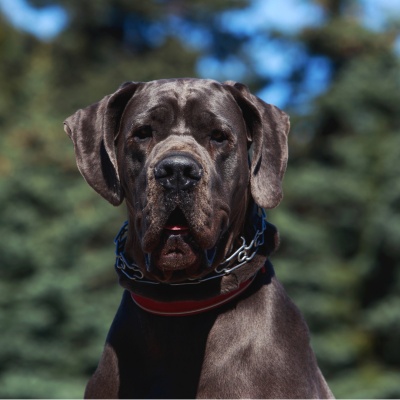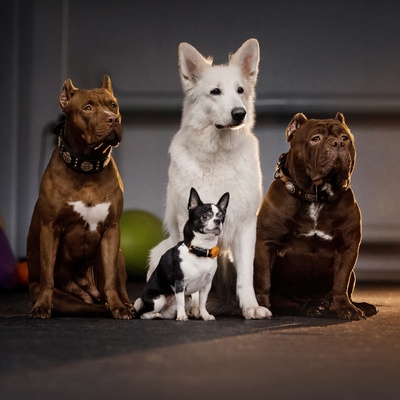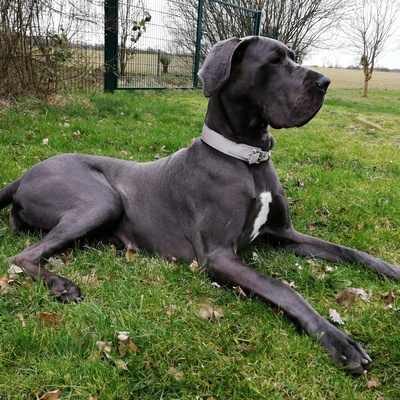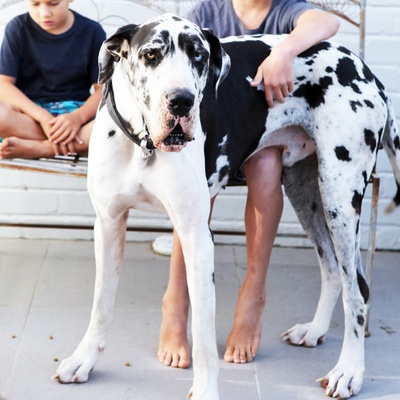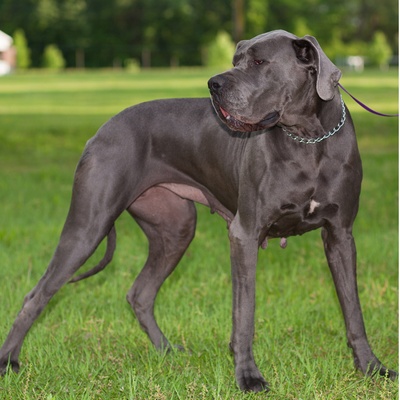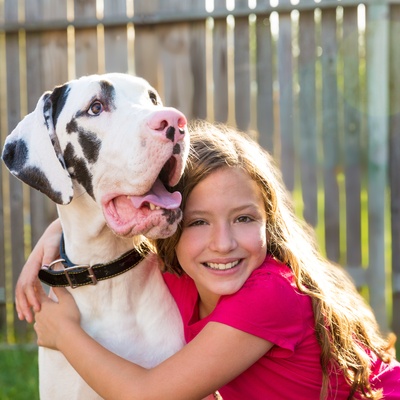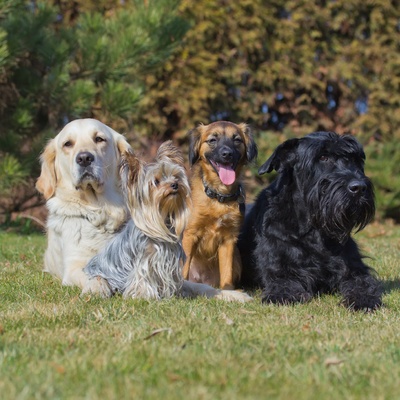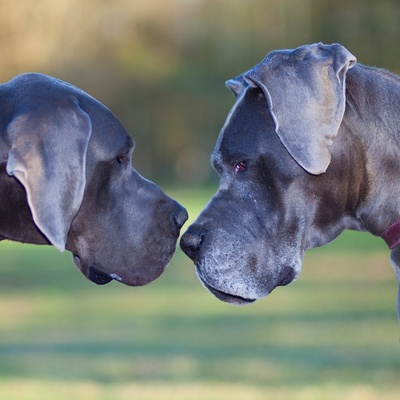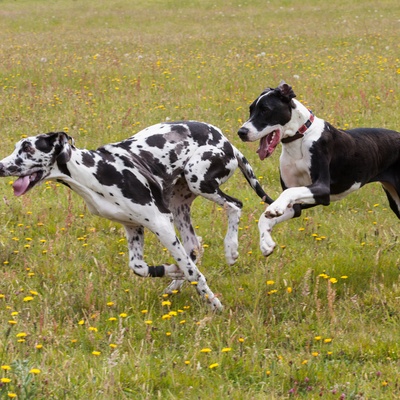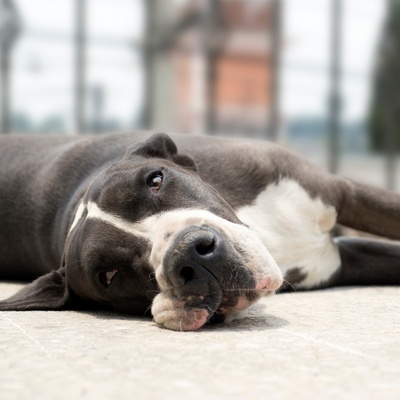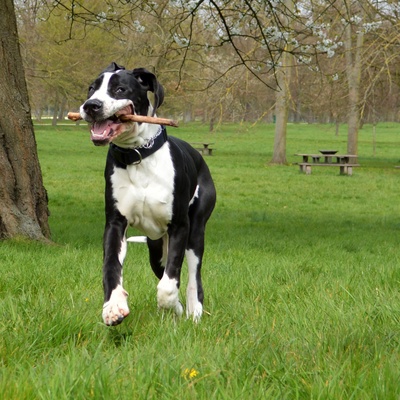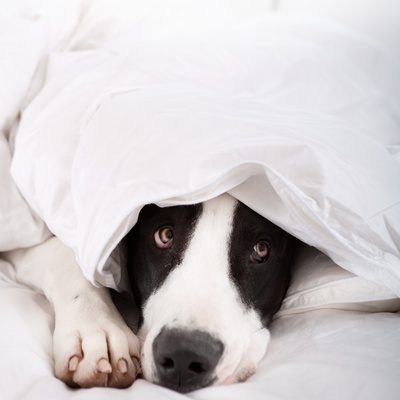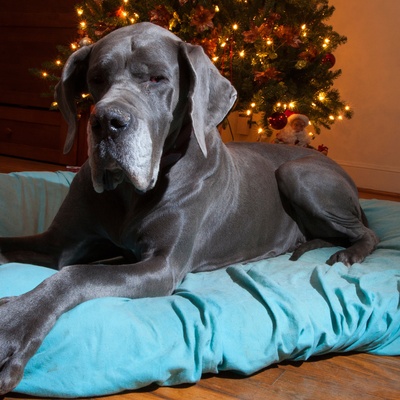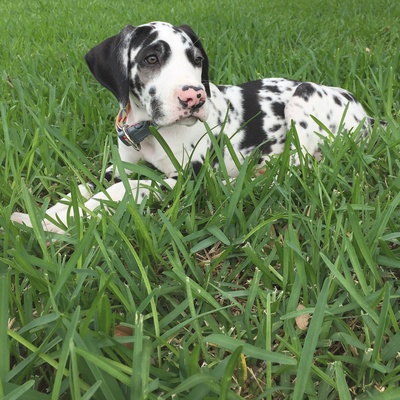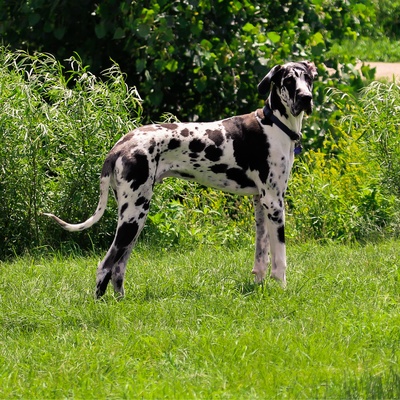Introducing the Great Dane
Find out everything you need to know about the Great Dane: its characteristics, its behavior, its education, its price.
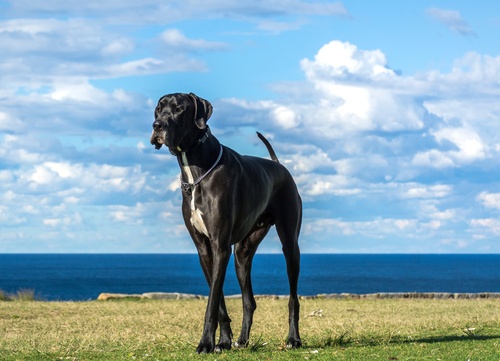
Find out everything you need to know about the Great Dane: its characteristics, its behavior, its education, its price.
Originally bred in Germany for hunting, the Great Dane is now one of the most popular breeds globally. Renowned for their enormous size and elegant build, these dogs are surprisingly gentle and affectionate. Brave and versatile, Great Danes excel as both loyal companions and reliable guard dogs. Despite their towering presence, they are deeply loving, forming strong, affectionate bonds with their families.
This section outlines the unique features of the Great Dane breed.
The Great Dane belongs to the Working Group, which includes powerful working dogs like Mastiffs. Known for their strength and loyalty, they are gentle yet protective.
Great Danes stand 28 to 34 inches tall and weigh 100 to 200 pounds, making them one of the largest dog breeds.
They have short, sleek coats that lie close to the body, giving them a smooth appearance.
Great Danes come in various colors, including fawn, brindle, blue, black, and harlequin.
They adapt well to spacious homes with yards for light exercise.
Friendly and affectionate, Great Danes are great with children and other pets.
Prone to joint issues and bloat, regular care is important for their health.
Intelligent and responsive, Great Danes are easy to train with gentle, consistent methods.
We can help!
Each dog has its own character and specific needs. Making the right choice will allow you to ensure their well-being and yours.
Thanks to our quiz, you will know the breed that suits you based on your personality, your style and place of life and many other criteria.
Don't wait any longer and take the quiz to find out the answer!
Great Danes are massive, well-balanced dogs with sleek coats in colors like fawn, blue, and harlequin. Their square face and alert expression give them a noble appearance.
Females stand 28-30 inches tall, while males can reach 34 inches. Females weigh 100-140 pounds, and males 140-200 pounds. Great Danes grow rapidly and reach full size by 18-24 months.
Great Danes have a short, smooth coat that lies close to their body.
Their coat comes in colors like fawn, brindle, blue, black, and harlequin.
Great Danes shed moderately year-round and need weekly brushing. Occasional baths are sufficient to maintain their coat.
The Great Dane is a balanced, well-proportioned dog with a large, rectangular head and a square muzzle. Its deep-set, dark eyes convey a gentle expression, while its high-set floppy ears fold forward. The body is muscular and athletic, showcasing both strength and elegance.
Great Danes are loyal, gentle, and affectionate, making them protective and loving companions.
There are over 400 dog breeds in 10 groups. The Great Dane is in the Working Group, which includes strong working dogs like Mastiffs. These dogs are known for their strength, intelligence, and protective instincts, making Great Danes excellent family companions and guard dogs.
Great Danes are calm and affectionate, thriving on close bonds with their owners. They need a present and attentive owner to provide the emotional support they crave.
Friendly and sociable, Great Danes are great with humans, other animals, and children. Early socialization is key to ensuring they develop good manners and adaptability.
Take the test and find out the dog breed that matches your personality and lifestyle.
Great Danes adapt to various living environments but need plenty of attention. They require at least two daily walks of 30 minutes each.
Great Danes benefit from outdoor space to burn energy and explore. Regular outdoor activity helps keep them happy and healthy.
Great Danes are intelligent and respond well to positive reinforcement. Early training is key due to their size, and a GPS collar helps prevent escapes.
Great Danes are attentive and loyal, requiring patience and consistency in training. Once trained, they are obedient and reliable companions.
Great Danes are generally healthy but need daily care to prevent illness. Regular vet check-ups and proactive care help maintain their well-being.
Great Danes are generally robust but can be prone to conditions like hip dysplasia, bloat, and heart issues. Symptoms include difficulty walking or lethargy. Their typical lifespan is 7 to 10 years.
Regular vet visits, vaccinations, and parasite treatments are essential. At home, weekly brushing, ear cleaning, dental care, and nail trimming are needed. Great Danes are not hypoallergenic.
Great Danes need a balanced diet rich in protein and vitamins to stay healthy. Premium kibble is ideal for their nutritional needs. If needed, you can add lean white or red meat, but limit fats to prevent weight gain.
The Great Dane is a well-regarded breed with several breeders in the UK. It's important to consider several factors before adopting.
Before adopting a Great Dane, there are some important points to consider. First and foremost, you need to check that the breeder is reputable. This means visiting the breeder's premises to assess the living conditions and behavior of the dogs. Responsible breeders will provide transparent information about the puppy's health and any genetic illnesses in its lineage.
Lastly, mandatory electronic identification, like microchipping, is not always mandated at the federal level in the United States for cats and dogs. But microchipping is widely acknowledged as a successful way to permanently identify pets and increase the possibility of reuniting lost pets with their owners, even in the absence of universal regulations. As a pet owner, it is advised to inform yourself about municipal laws to ensure the safety and wellbeing of your pet.
Great Dane puppies typically cost between
and
. Annual expenses, including vet care and food, range from
to
Choosing a dog that matches your personality and lifestyle will ensure your well-being and his!
